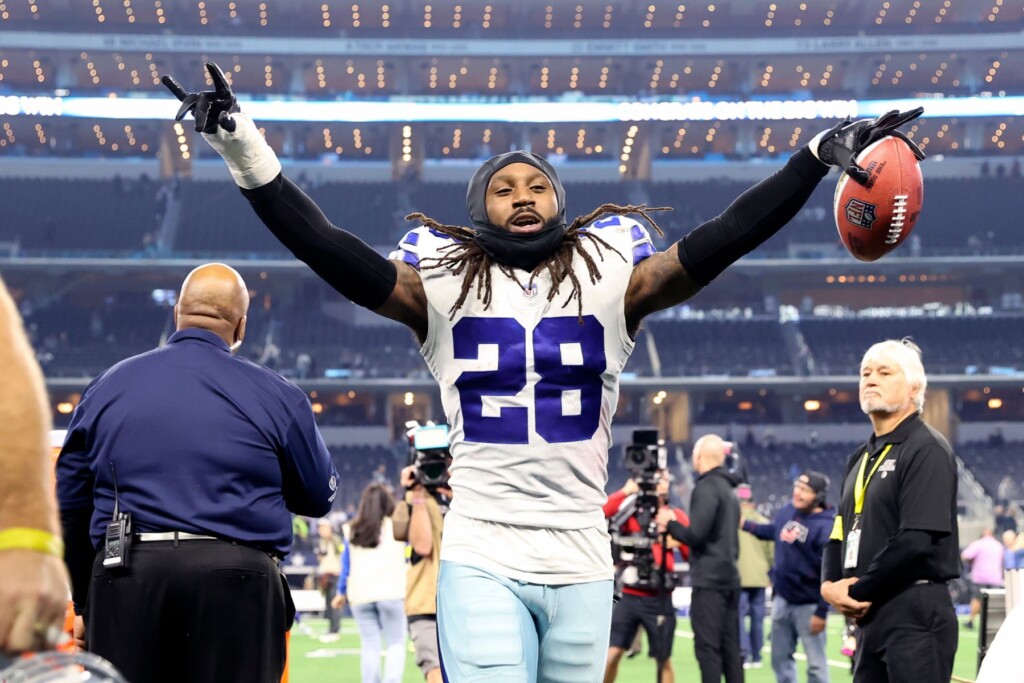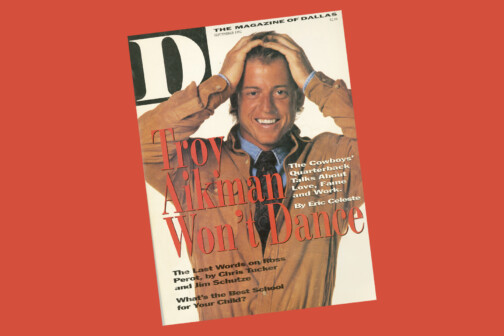Many years ago, I had the chance to do a radio interview with Aaron Schatz of Football Outsiders. I was a massive fan of FO’s content, and it seemed to me that their work, along with the work of Brian Burke (now with ESPN) and the work he was doing at Advanced Football Analytics was identifying some of the inefficiencies in the way NFL teams approached their game plans. At some point in our conversation, I recall Aaron making the point that NFL defenses should be heavily engineered to do one thing: stop the opposition’s passing game. At this time, the “nickel is base”–five defensive backs on the field as a matter of course–argument hadn’t really taken off. Most teams were still, on the majority of snaps, playing four DBs. The problem was that offenses were advancing ahead of defenses and exploiting that mismatch.
Eventually, everyone caught on. Last season, 30 of 32 NFL teams played nickel on more than 50 percent of their snaps. The Cowboys were at the forefront, ranking fourth in the league, at 76.8 percent. It just makes sense in a world where offenses now use three-receiver sets as their base offense.
That’s still a big deal in Dallas, where despite the ultra-modern practice facilities and stadium, the Cowboys have often been a bit behind league trends under Jerry Jones. Recall when the Cowboys tried to jump into the two tight-end craze after seeing the Patriots have success with it for a few seasons. (The late Gavin Escobar could not deliver what Dallas envisioned.) Then there’s the time the club drafted Ezekiel Elliott fourth overall and subsequently made him the NFL’s highest-paid running back, well after most of the league realized that was born out of antiquated thinking.
Right now, though, on the defensive side of the ball, the Cowboys under Dan Quinn have about the most modern approach to personnel and scheme in the league. Referring back to that conversation with Schatz, I made this throwaway comment: “Why not play six defensive backs, three corners and three safeties? Why not seven!” Well, now I want my consulting fee. Last season, the Cowboys played out of dime (six defensive backs) on nearly 20 percent of their snaps, fourth-most in the league. They ran a 3-2-6 (with three down linemen and two linebackers), more than anyone in the league. And Micah Parsons, who fits into zero firm positional categories, was one of those five non-DBs on the field.
That’s the backdrop worth knowing after the Cowboys recently locked down safety Malik Hooker with a three-year, $24 million contract a year before he was set to reach free agency. It was the second such deal they reached in the last six months, after signing Donovan Wilson to a three-year, $21 million deal. Dallas, the franchise that neglected the position so blatantly that it spent years dumpster-diving for recyclable parts, is now in the business of investing there: the Cowboys have the 10th-most amount of their cap allocated to the safety position, per OverTheCap.com.
I spoke with the brilliant Cody Alexander about this, because his breakdowns of secondary play are the best I’ve seen on the subject. I wanted to know his thoughts on the value of having multiple competent, versatile safeties and playing them together.
“A lot of people see safety as the running back of defense,” Alexander said, referencing a perceived fungibility at the position–that, like the Cowboys used to do, teams can replace all but the most elite talents relatively easily. “But I would argue that now you need to have multiple safeties. I think the Patriots are a great example of this. They basically have four guys that can play up or back.” Sure enough, the Patriots played more dime than anyone last year, even Dallas.
“When you can have three competent safeties, that allows you to then mix and match, because each is going to have a unique skill set, and you can then use them to eliminate certain targets” he continued.
In Dallas, Wilson, Hooker, and Jayron Kearse played an almost identical number of snaps last season–and further, an almost identical number of snaps against the run and the pass. All three were highly competent and productive. But only Kearse and Hooker were under contract for this season. It would have been easy for the Cowboys to settle on the notion they had two competent safeties, leaving Wilson as the odd man out. They didn’t. And after they re-signed him, they could have decided to let Hooker walk out the door for nothing next offseason. They didn’t do that, either.
As a result, even outside of that unusual 3-2-6, Dallas played less “base” defense–seven defensive linemen and linebackers–than anyone in the league last year at a minuscule 3.4 percent. In 2019, Rod Marinelli’s last season as defensive coordinator, the Cowboys played the fourth-most base and ranked 23rd in their deployment of dime personnel. The game has changed, and the Cowboys’ coaching staff and scouting department know that.
What I find interesting is that if you look at the types of coverages Dallas uses within those formations, nothing stands out. It’s pretty evenly distributed. Think of the way an elite pitcher uses deception; everything he throws looks the same coming out of the hand, and then all hell breaks loose for the batter.
The Cowboys defense ranked second in the NFL last season in EPA/play, and the usage and performances of the safeties are just a part of that. Parsons is the most significant component; he disrupts the passing attack more than any defensive back ever could. Trading for cornerback Stephon Gilmore to pair with Trevon Diggs is another indication the coaching staff and front office understand the importance of shutting down the aerial game above all else. (Dallas did draft defensive tackle Mazi Smith in the first round this year, but that was at such a dire position of need that it was defensible.)
But the safeties and their multidimensionality are what unlock so many possibilities. The coaching staff doesn’t have to pick between the guy big enough to simulate a linebacker in run support (Kearse) or the traditional center fielder (Hooker) or the wild card who makes big plays (Wilson). They have all three, and the defense enjoys all the perks of using them together.
In 2019, when the Cowboys finally drafted a safety (Wilson) in the sixth round, Stephen Jones was asked about why the club had not selected one earlier. “Well, we felt better than people from the outside looking in feel about our safety position,” he said. “I’ve mentioned time and time again that we don’t have as much resources allocated to that position, and it is probably not by accident.”
This recent shift was also not an accident, nor is the accompanying uptick in the quality of the defense. The Cowboys are playing their safeties, and now they are paying them, too. It’s a big reason why one of the NFL’s modern, elite defenses should stay that way.
Author







